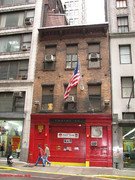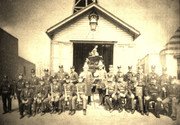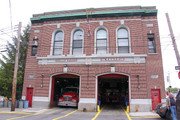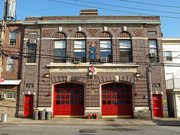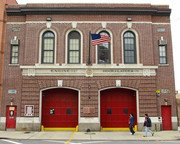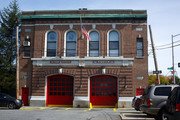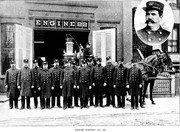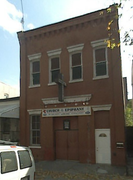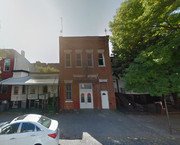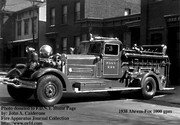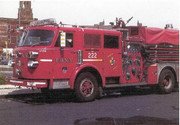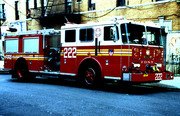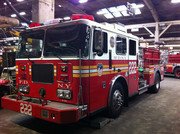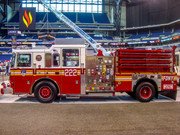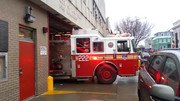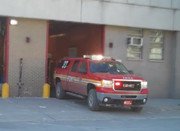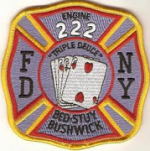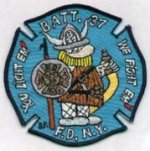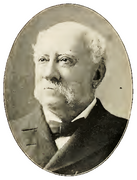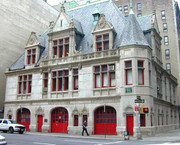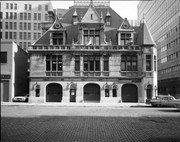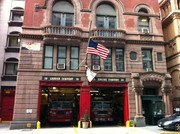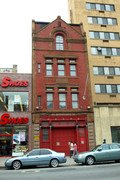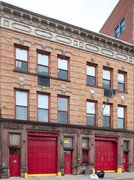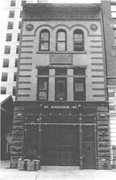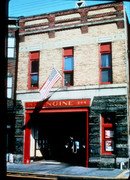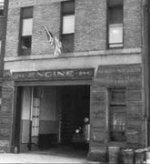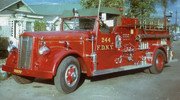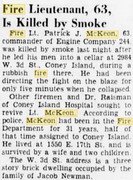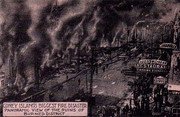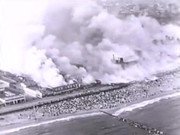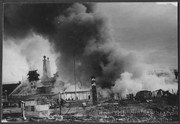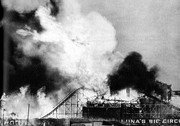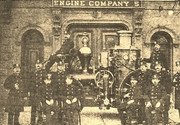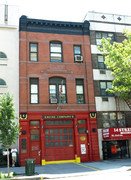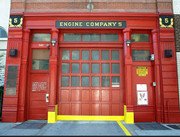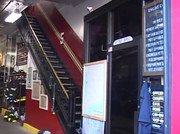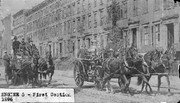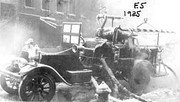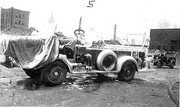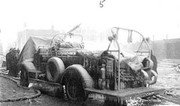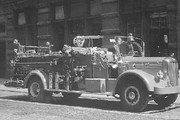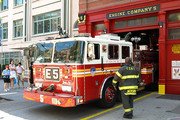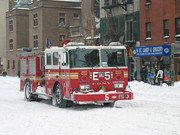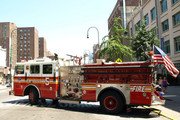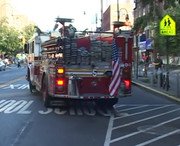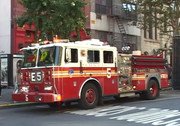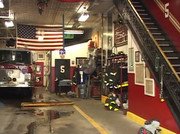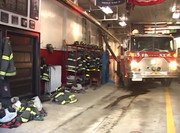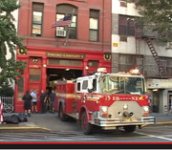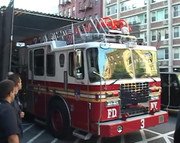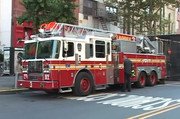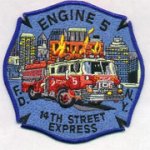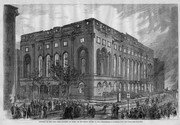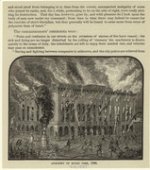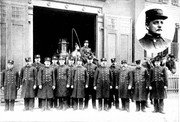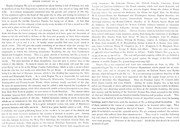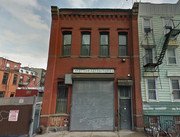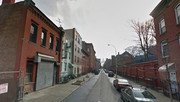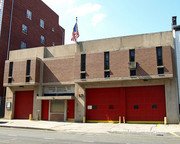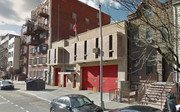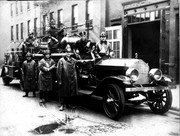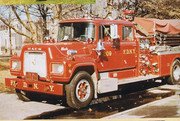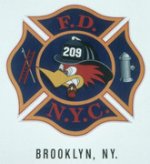Engine 26/Engine 26-2 firehouse 220 W 37th Street Garment District, Manhattan
Engine 26 organized 220 W 37th Street 1865
(Note - former quarters of volunteer Valley Forge Engine Company 46 built 1860)
Engine 26 moved to 501/503 7th Avenue 1881
Engine 26 moved to 220 W 37th Street 1882
Engine 26 disbanded 1975
Engine 26 reorganized 220 W 37th Street 1975
Engine 26 moved to 440 W 38th Street 2001
Engine 26 moved to 220 W 37th Street 2002
Engine 26-2 organized 220 W 37th Street at Engine 26 1884
Engine 26-2 disbanded to form Engine 34-2 1893
Engine 26-2 reorganized 1894
Engine 26-2 disbanded 1939
Valley Forge Engine 46: "Foreman, Francis E. Skelding. Located 138 West Thirty-seventh street; performs duty in the first and second districts. House in good condition; steam engine, second class, 7-inch steam cylinder, 8-inch stroke, and 9-inch pump, in good condition; built in 1859, by Lee & Larned; present number of men, 47; 150 feet of Boyd's and 300 feet of rubber hose, in good condition; 200 feet of leather hose in ordinary condition. This company also have a wood tender in good condition." Status report from The History Box: Manual of the Corporation of the City of New York by D.T. Valentine 1865
Engine 26:
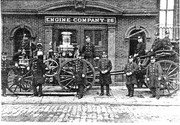
220 W 37th Street firehouse - "The Batcave":
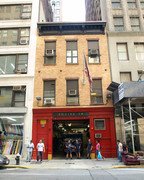
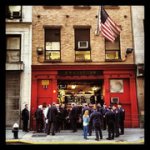

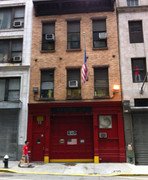
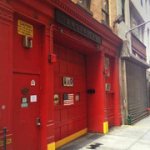
Engine 26:



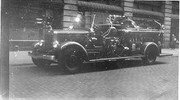
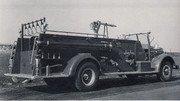
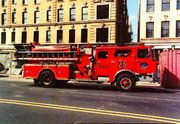
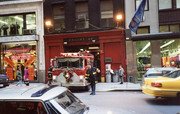


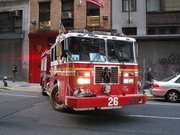
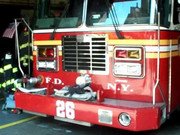
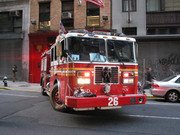
https://www.youtube.com/watch?v=NyWglKg4-Z8
https://www.youtube.com/watch?v=2ILV2_cIlp0
https://www.youtube.com/watch?v=MrN5dl9VoMM
Never forget:
February 26, 1907: Box 22-476 573 8th Avenue
FF Harry F Baker Engine 26 LODD overcome by gas
FF Adam Damm Engine 26 LODD overcome by gas
September 11, 2011: World Trade Center


Garment District:
http://en.wikipedia.org/wiki/Garment_District,_New_York_City
http://ny-pictures.com/nyc/photo/area/3978/Garment_District2C_Manhattan
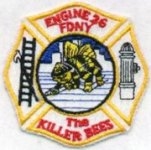
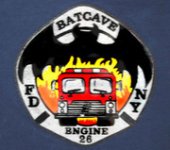
Engine 26 organized 220 W 37th Street 1865
(Note - former quarters of volunteer Valley Forge Engine Company 46 built 1860)
Engine 26 moved to 501/503 7th Avenue 1881
Engine 26 moved to 220 W 37th Street 1882
Engine 26 disbanded 1975
Engine 26 reorganized 220 W 37th Street 1975
Engine 26 moved to 440 W 38th Street 2001
Engine 26 moved to 220 W 37th Street 2002
Engine 26-2 organized 220 W 37th Street at Engine 26 1884
Engine 26-2 disbanded to form Engine 34-2 1893
Engine 26-2 reorganized 1894
Engine 26-2 disbanded 1939
Valley Forge Engine 46: "Foreman, Francis E. Skelding. Located 138 West Thirty-seventh street; performs duty in the first and second districts. House in good condition; steam engine, second class, 7-inch steam cylinder, 8-inch stroke, and 9-inch pump, in good condition; built in 1859, by Lee & Larned; present number of men, 47; 150 feet of Boyd's and 300 feet of rubber hose, in good condition; 200 feet of leather hose in ordinary condition. This company also have a wood tender in good condition." Status report from The History Box: Manual of the Corporation of the City of New York by D.T. Valentine 1865
Engine 26:

220 W 37th Street firehouse - "The Batcave":





Engine 26:












https://www.youtube.com/watch?v=NyWglKg4-Z8
https://www.youtube.com/watch?v=2ILV2_cIlp0
https://www.youtube.com/watch?v=MrN5dl9VoMM
Never forget:
February 26, 1907: Box 22-476 573 8th Avenue
FF Harry F Baker Engine 26 LODD overcome by gas
FF Adam Damm Engine 26 LODD overcome by gas
September 11, 2011: World Trade Center


Garment District:
http://en.wikipedia.org/wiki/Garment_District,_New_York_City
http://ny-pictures.com/nyc/photo/area/3978/Garment_District2C_Manhattan



